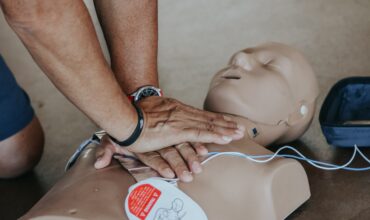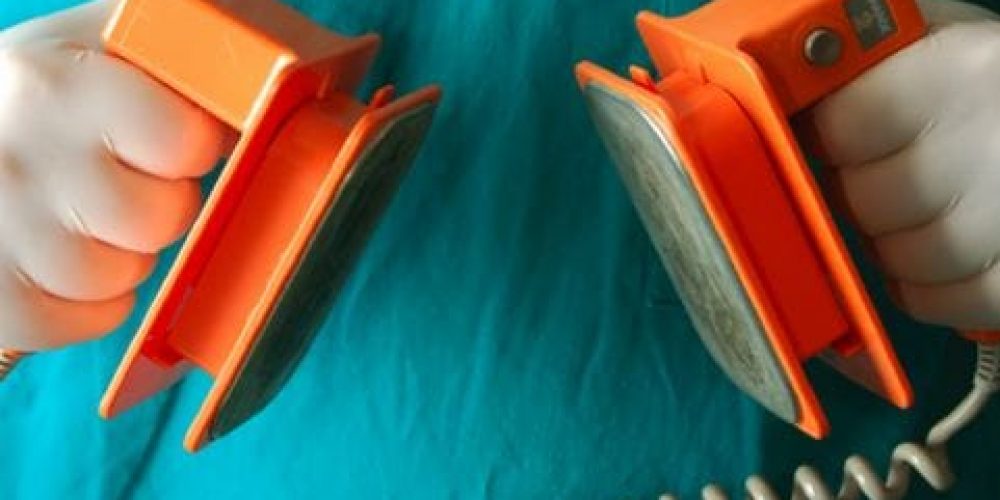- Your cart is empty
- Continue Shopping


Early defibrillation is a critical intervention that can make the difference between life and death. When it comes to sudden cardiac arrest (SCA), every second counts
Defibrillation is the sole effective treatment for someone experiencing cardiac arrest. For each minute that a person suffering from Sudden Cardiac Arrest goes without defibrillation, their survival probability decreases by 7-10%. This highlights the critical importance of quick defibrillation in increasing the chances of survival and underscores its vital role in rescuing a life from Sudden Cardiac Arrest.
SCA occurs when the heart’s electrical system malfunctions, leading to a chaotic heart rhythm that prevents effective pumping of blood to vital organs.
Defibrillation is a medical procedure that involves delivering an electrical shock to your heart, either from electrodes placed on the chest (external defibrillation) or through specialized paddles placed directly on the heart (internal defibrillation). The goal of defibrillation is to interrupt or stop an abnormal heart rhythm, particularly in the heart’s ventricles, and restore a normal, coordinated heartbeat.
During a cardiac arrest or certain life-threatening arrhythmias (abnormal heart rhythms), the heart can lose its ability to contract effectively and pump blood. This can lead to a lack of oxygen supply to vital organs, which can be fatal if not corrected promptly.
Defibrillation works by momentarily depolarizing the heart muscle cells, essentially resetting their electrical activity. This brief interruption in electrical activity can allow the heart’s natural pacemaker to regain control and reestablish a normal rhythm.
Sudden cardiac arrest is a life-threatening condition where the heart suddenly stops beating effectively. It can happen to anyone, anywhere, at any time. Unlike a heart attack, which is caused by a blocked artery, SCA is often triggered by abnormal heart rhythms.
In many cases of SCA, the heart goes into ventricular fibrillation (VF) or ventricular tachycardia (VT). These are chaotic, rapid heart rhythms that can lead to a complete loss of effective cardiac output. This is where early defibrillation becomes crucial.
In the world of SCA, time is of the essence. The longer it takes to administer defibrillation, the lower the chances of survival. Let’s delve into why timing matters:
For every minute that passes without defibrillation, the chances of survival drop significantly, by about 10%. This means that prompt defibrillation within the first few minutes after SCA occurs offers the best chance of saving a person’s life.
Early defibrillation can reset the heart’s electrical activity, allowing it to return to a normal, coordinated rhythm. This is essential for effective circulation and the delivery of oxygen to vital organs.
Effective blood flow is crucial for supplying oxygen to the brain and vital organs. During SCA, when the heart is not pumping effectively, these organs can suffer damage within minutes. Early defibrillation helps maintain blood flow, minimizing the risk of brain and organ damage.
While CPR is essential during SCA to manually circulate blood and oxygen, it is not a definitive treatment. CPR can help buy time until defibrillation can be administered, but the shock from a defibrillator is often necessary to restore normal heart function.
Studies have shown that early defibrillation significantly increases the chances of survival from sudden cardiac arrest. When administered within the first few minutes, survival rates can be as high as 70% or more. However, these rates drop significantly with delays in defibrillation.
The chain of survival is a sequential series of critical steps aimed at maximizing the chances of survival for individuals experiencing sudden cardiac arrest. It typically consists of five key links: early recognition and activation of emergency services, immediate initiation of cardiopulmonary resuscitation (CPR) to maintain blood circulation and oxygenation, prompt defibrillation to restore a normal heart rhythm, rapid advanced life support and professional medical care, and integrated post-cardiac arrest care to optimize recovery.
Each link in this chain plays a vital role in increasing the likelihood of survival and minimizing potential long-term complications, emphasizing the importance of a swift and coordinated response to cardiac emergencies.
In recent years, the availability of automated external defibrillators (AEDs) in public places has revolutionized the response to SCA. These devices are designed to be user-friendly and provide step-by-step instructions, making it possible for bystanders to take life-saving action even before professional medical help arrives.
Implementation Guide